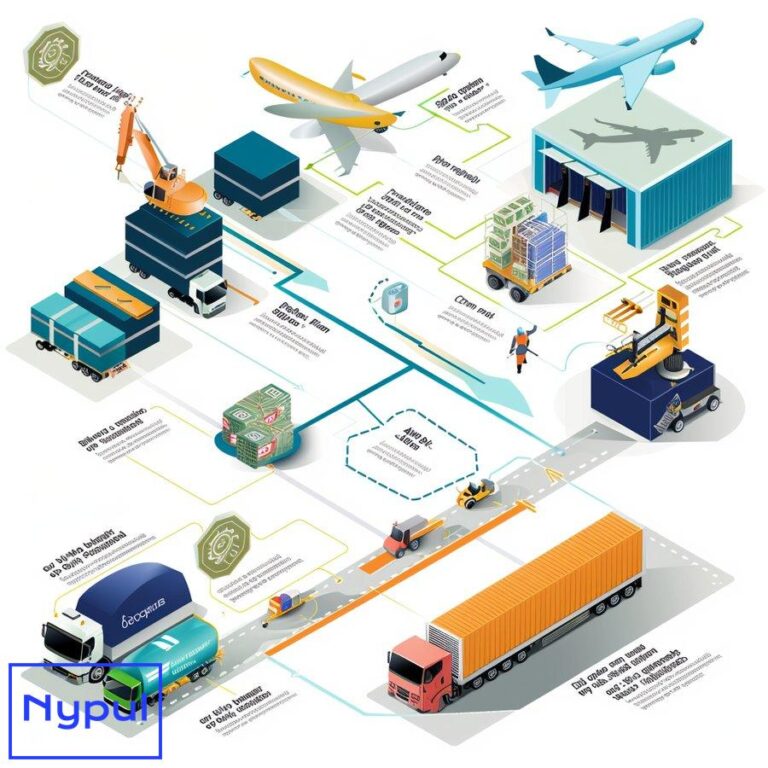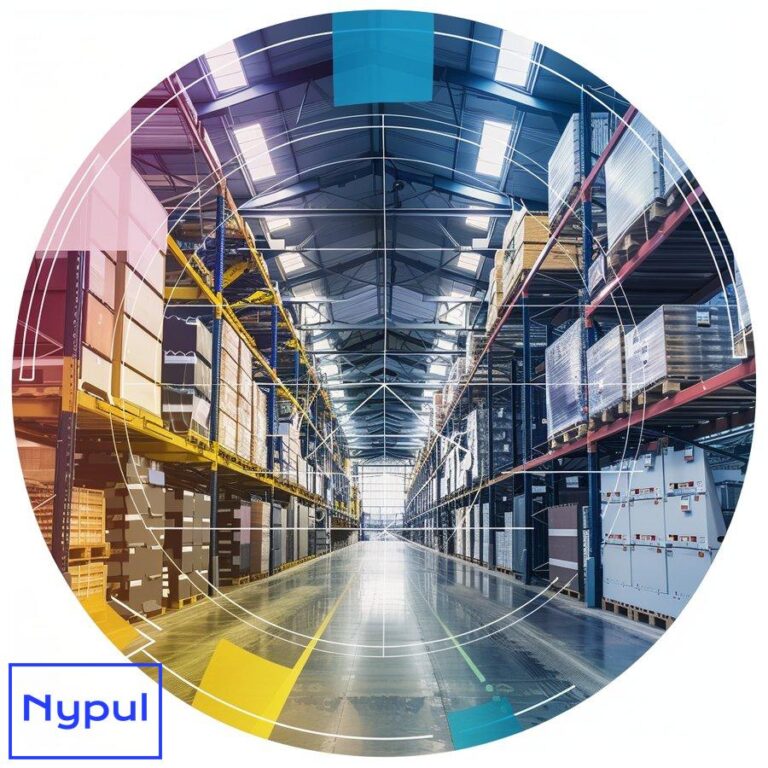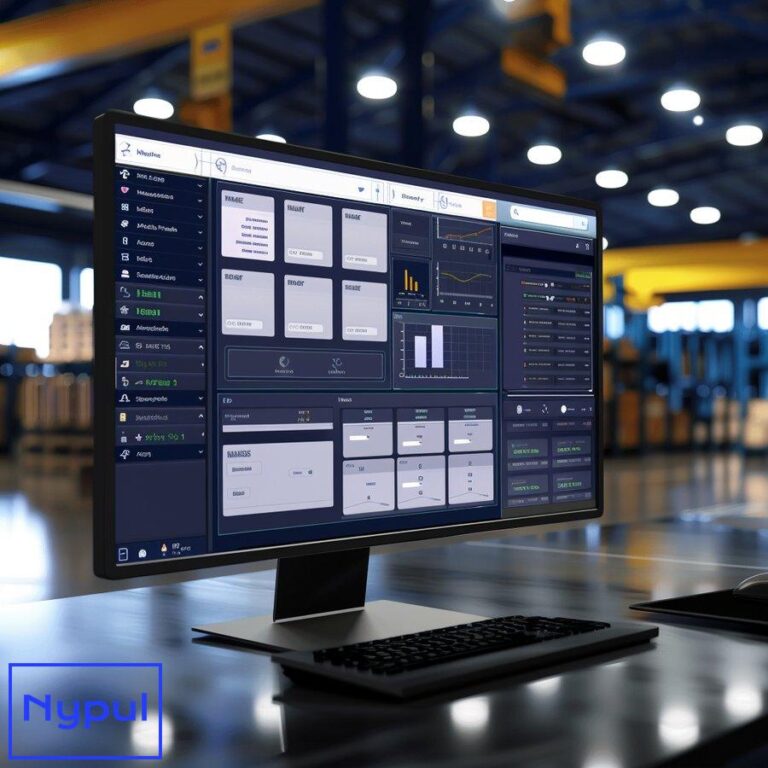What Is the Most Common Problem in Refrigerated Shipping Containers
What are refrigerated shipping containers and why are they important?
Refrigerated shipping containers, also known as reefer containers, are specialized cargo containers designed to transport temperature-sensitive goods, such as perishable foods, pharmaceuticals, and chemicals, over long distances by sea, rail, or road. These containers are equipped with advanced refrigeration systems that maintain a specific temperature range, ensuring the integrity and quality of the cargo throughout the journey.

Reefer containers play a crucial role in the global supply chain by enabling the safe and efficient transportation of temperature-sensitive products. They allow for the distribution of fresh produce, frozen goods, and other perishables to distant markets, expanding consumer access to a wider variety of products year-round. Without these specialized containers, many industries would face significant challenges in delivering their goods to customers in a timely and cost-effective manner.
The importance of refrigerated shipping containers cannot be overstated. They contribute to the global economy by facilitating trade, reducing food waste, and ensuring the availability of essential goods. As the demand for perishable products continues to grow, the need for reliable and efficient refrigerated transportation solutions becomes increasingly important.
How do temperature control issues affect refrigerated shipping?
Temperature control issues in refrigerated shipping can have severe consequences for the quality and safety of the transported goods. Maintaining the correct temperature range is crucial for preserving the integrity of perishable products, such as fresh produce, meat, and dairy. Any deviation from the optimal temperature can lead to spoilage, contamination, and reduced shelf life, resulting in significant financial losses for shippers and retailers.
In addition to the direct impact on the cargo, temperature control issues can also affect the overall efficiency of the supply chain. Delays in delivery, additional inspections, and the need for product replacement can all contribute to increased costs and disruptions in the distribution process. Moreover, temperature-related problems can lead to customer dissatisfaction and damage to the reputation of the shipping company or the brand associated with the affected products.
To mitigate the risks associated with temperature control issues, it is essential for shippers to implement robust monitoring systems, adhere to strict temperature guidelines, and ensure proper maintenance of refrigeration equipment. Regular inspections, proper loading procedures, and effective communication between all parties involved in the supply chain can help minimize the occurrence of temperature-related problems and ensure the successful delivery of temperature-sensitive goods.
What causes temperature fluctuations in reefer containers?
Temperature fluctuations in refrigerated shipping containers can be caused by a variety of factors, both internal and external to the container itself. Understanding the potential causes of these fluctuations is crucial for developing strategies to maintain stable temperatures and protect the integrity of the cargo.
One of the primary causes of temperature fluctuations is the design and condition of the refrigeration system within the reefer container. Malfunctioning or outdated equipment, inadequate insulation, and improper maintenance can all contribute to inconsistent temperature control. Additionally, the refrigeration system may struggle to maintain the desired temperature if the container is overloaded or if the cargo is not properly pre-cooled before loading.
External factors, such as ambient temperature changes, exposure to direct sunlight, and frequent door openings during loading and unloading, can also lead to temperature fluctuations. Reefer containers are designed to maintain a specific temperature range, but extreme weather conditions or prolonged exposure to high temperatures can challenge the refrigeration system’s ability to keep the cargo at the optimal temperature.
Other factors that may contribute to temperature fluctuations include:
– Improper stacking or placement of cargo within the container, which can restrict air flow and prevent even cooling
– Leaks in the container’s structure or refrigeration system, allowing warm air to enter and cool air to escape
– Power supply interruptions or voltage fluctuations, which can disrupt the refrigeration system’s operation
– Delays in transit, such as extended waiting times at ports or border crossings, which can expose the container to changing environmental conditions
To minimize the impact of temperature fluctuations, shippers should carefully monitor the condition of their reefer containers, adhere to recommended loading practices, and respond promptly to any deviations from the desired temperature range. Regular maintenance, proper cargo preparation, and effective communication with transportation providers can help ensure that temperature-sensitive goods arrive at their destination in optimal condition.
How can temperature problems be detected and monitored effectively?
Effective detection and monitoring of temperature problems in refrigerated shipping containers are crucial for maintaining the quality and safety of temperature-sensitive cargo. Several methods and technologies are available to help shippers and carriers identify and address temperature-related issues throughout the transportation process.
One of the most basic and widely used methods for monitoring temperature in reefer containers is the use of temperature recorders or data loggers. These devices are placed inside the container and record the temperature at regular intervals, providing a detailed record of the temperature history during transit. Data loggers can be retrieved at the destination and the recorded data can be analyzed to identify any temperature excursions or fluctuations.
More advanced temperature monitoring solutions involve the use of real-time tracking and monitoring systems. These systems use sensors and communication technologies to continuously transmit temperature data from the reefer container to a central monitoring platform. This allows for immediate detection of temperature problems and enables shippers and carriers to take prompt corrective action, such as adjusting the refrigeration settings or arranging for emergency repairs.
Some key features of effective temperature monitoring systems include:
– Continuous temperature monitoring and data transmission at regular intervals
– Alerts and notifications when temperature thresholds are exceeded
– Integration with transportation management systems for seamless data sharing
– Compatibility with various types of reefer containers and refrigeration systems
– Secure data storage and easy access to historical temperature records
In addition to electronic monitoring systems, visual inspections and manual temperature checks can also help detect potential temperature problems. Regular checks of the refrigeration equipment, cargo condition, and container seals can identify issues that may not be detected by automated systems.
By implementing a comprehensive temperature monitoring strategy that combines electronic tracking, manual inspections, and clear communication protocols, shippers and carriers can effectively detect and respond to temperature problems in refrigerated shipping containers. This helps ensure the quality and safety of temperature-sensitive cargo throughout the transportation process.
What are the consequences of temperature control failures in refrigerated shipping?
Temperature control failures in refrigerated shipping can have severe consequences for the quality, safety, and value of the transported cargo. When the desired temperature range is not maintained, temperature-sensitive goods such as perishable foods, pharmaceuticals, and chemicals can suffer from spoilage, contamination, and degradation, leading to significant financial losses and potential health risks.
One of the most immediate consequences of temperature control failures is the loss of product integrity. Perishable goods like fresh produce, meat, and dairy products can quickly spoil when exposed to temperatures outside their optimal range, rendering them unfit for human consumption. This not only results in financial losses for shippers and retailers but also contributes to food waste, which has broader environmental and social implications.
In the case of pharmaceutical products, temperature control failures can compromise the efficacy and safety of the drugs. Many medications require strict temperature control to maintain their potency and stability. If these products are exposed to temperatures outside their specified range, they may lose their therapeutic effectiveness or even become unsafe for use. This can lead to serious health consequences for patients and legal liabilities for pharmaceutical companies and distributors.
Temperature control failures can also have broader supply chain implications. Delays in delivery, additional inspections, and the need for product replacement can all contribute to increased costs and disruptions in the distribution process. Moreover, temperature-related problems can lead to customer dissatisfaction and damage to the reputation of the shipping company or the brand associated with the affected products.
In some cases, temperature control failures can even pose safety risks to consumers. Certain types of cargo, such as hazardous materials or chemicals, require precise temperature control to prevent the risk of fire, explosion, or the release of toxic substances. If these materials are exposed to temperatures outside their safe operating range, they can become unstable and pose a threat to public safety.
To mitigate the consequences of temperature control failures, it is essential for shippers to implement robust monitoring systems, adhere to strict temperature guidelines, and ensure proper maintenance of refrigeration equipment. Regular inspections, proper loading procedures, and effective communication between all parties involved in the supply chain can help minimize the occurrence of temperature-related problems and ensure the successful delivery of temperature-sensitive goods.
How can temperature control issues be prevented in reefer containers?
Preventing temperature control issues in refrigerated shipping containers requires a multi-faceted approach that involves careful planning, proper equipment maintenance, and effective communication throughout the supply chain. By implementing best practices and leveraging emerging technologies, shippers and carriers can minimize the risks associated with temperature fluctuations and ensure the safe delivery of temperature-sensitive cargo.
Proper equipment selection and maintenance
Selecting high-quality reefer containers with efficient refrigeration systems is the first step in preventing temperature control issues. Shippers should work with reputable carriers and container leasing companies to ensure that the containers they use are well-maintained, properly insulated, and equipped with reliable refrigeration units.

Regular maintenance of the refrigeration equipment is crucial to prevent breakdowns and ensure consistent temperature control. This includes regular cleaning, inspection, and replacement of worn or damaged components. Shippers should also ensure that the refrigeration units are properly calibrated and set to the appropriate temperature range for the specific cargo being transported.
Proper cargo preparation and loading
Proper preparation and loading of cargo into reefer containers can significantly contribute to maintaining stable temperatures throughout the transportation process. Shippers should ensure that the cargo is pre-cooled to the desired temperature before loading, and that the container is not overloaded, as this can restrict air flow and prevent even cooling.
Cargo should be stacked and secured in a way that allows for optimal air circulation within the container. Shippers should also be mindful of the placement of cargo, ensuring that temperature-sensitive items are not placed near the container walls or doors, where they may be more susceptible to temperature fluctuations.
Effective monitoring and communication
Continuous monitoring of temperature conditions within reefer containers is essential for detecting and responding to potential issues. As discussed earlier, the use of temperature recorders, real-time tracking systems, and regular manual inspections can help identify temperature excursions and enable prompt corrective action.
Effective communication between all parties involved in the supply chain is also crucial for preventing and addressing temperature control issues. Shippers should provide clear instructions and guidelines to carriers regarding temperature requirements, and carriers should promptly report any deviations or malfunctions to the shippers.
Leveraging smart technologies
Emerging technologies, such as IoT (Internet of Things) sensors, blockchain, and artificial intelligence, are revolutionizing the way temperature control issues are prevented and managed in refrigerated shipping. IoT sensors can provide real-time temperature data and enable predictive maintenance of refrigeration equipment, while blockchain can ensure the integrity and traceability of temperature records throughout the supply chain.
Artificial intelligence and machine learning algorithms can analyze historical temperature data and identify patterns that may indicate potential issues, allowing for proactive interventions to prevent temperature control failures. By embracing these smart technologies, shippers and carriers can enhance their ability to maintain stable temperatures and ensure the quality and safety of temperature-sensitive cargo.
By implementing a comprehensive strategy that combines proper equipment selection and maintenance, effective cargo preparation and loading, continuous monitoring, clear communication protocols, and the leveraging of smart technologies, shippers and carriers can significantly reduce the risk of temperature control issues in refrigerated shipping containers.
What role does proper loading play in maintaining temperature stability?
Proper loading of cargo into refrigerated shipping containers plays a crucial role in maintaining temperature stability and ensuring the safe delivery of temperature-sensitive goods. The way cargo is stacked, secured, and positioned within the container can have a significant impact on the refrigeration system’s ability to maintain the desired temperature range.
Cargo pre-cooling and temperature monitoring
Before loading cargo into a reefer container, it is essential to ensure that the cargo has been pre-cooled to the appropriate temperature. Warm or room-temperature cargo can cause the refrigeration system to work harder and struggle to maintain the desired temperature, leading to potential temperature fluctuations and delays in reaching the target temperature.
Shippers should also monitor the cargo’s temperature during the pre-cooling process and ensure that it has reached the desired temperature before loading. This can be done using temperature recorders or data loggers placed within the cargo itself or in the pre-cooling facility.
Cargo stacking and air circulation
The way cargo is stacked and secured within the reefer container can significantly impact air circulation and temperature distribution. Proper stacking ensures that air can flow freely around and through the cargo, allowing the refrigeration system to effectively cool all areas of the container.
Shippers should avoid stacking cargo too tightly or placing items directly against the container walls or doors, as this can restrict air flow and lead to uneven temperature distribution. Instead, cargo should be stacked in a way that allows for adequate spacing between packages and between the cargo and the container walls.
Cargo compatibility and separation
When loading multiple types of cargo into a single reefer container, it is essential to consider cargo compatibility and separate items that may have different temperature requirements or emit odors that could affect other goods.
For example, meat, fish, and dairy products should be separated from fruits and vegetables, as the former may emit ethylene gas, which can accelerate the ripening and spoilage of the latter. Similarly, strong-smelling items like onions or garlic should be kept separate from other goods to prevent odor transfer.
Securing cargo and preventing damage
Proper securing of cargo within the reefer container is crucial to prevent shifting or damage during transit. Unsecured cargo can shift and cause damage to itself or other items, potentially compromising the integrity of the packaging and exposing the contents to temperature fluctuations.
Shippers should use appropriate securing methods, such as straps, nets, or dunnage, to keep cargo in place during transportation. They should also ensure that cargo is not stacked too high or unevenly, as this can lead to instability and potential damage.
By following best practices for cargo pre-cooling, stacking, separation, and securing, shippers can help maintain temperature stability within reefer containers and minimize the risk of temperature-related issues during transportation. Regular training and communication with loading personnel can help ensure that proper loading procedures are consistently followed.
How do mechanical failures contribute to refrigerated container problems?
Mechanical failures in refrigerated shipping containers, also known as reefer containers, can significantly contribute to temperature control issues and the deterioration of temperature-sensitive cargo. These failures can occur in various components of the container’s refrigeration system, leading to inconsistent temperature control, equipment breakdowns, and potential cargo damage.

Compressor failures
The compressor is a critical component of the refrigeration system, responsible for circulating the refrigerant and generating the cooling effect. Compressor failures can occur due to wear and tear, lack of maintenance, or electrical issues, leading to a complete loss of cooling capacity or inconsistent temperature control.
When a compressor fails, the refrigeration system may not be able to maintain the desired temperature range, exposing the cargo to temperature fluctuations and potential spoilage. Compressor failures can also cause the refrigerant to leak, further compromising the system’s efficiency and potentially damaging the environment if the refrigerant is harmful.
Condenser and evaporator failures
The condenser and evaporator are essential parts of the refrigeration system, responsible for heat exchange and the evaporation and condensation of the refrigerant. Failures in these components can lead to reduced cooling capacity, uneven temperature distribution, and potential cargo damage.
Condenser failures can occur due to blockages, fouling, or mechanical issues, preventing the efficient dissipation of heat from the refrigerant. Evaporator failures, on the other hand, can be caused by ice buildup, refrigerant leaks, or mechanical problems, leading to reduced air circulation and uneven cooling within the container.
Electrical and control system failures
The electrical and control systems in reefer containers are responsible for powering the refrigeration unit and maintaining the desired temperature settings. Failures in these systems can lead to power interruptions, incorrect temperature settings, and potential damage to the refrigeration equipment.
Electrical failures can occur due to wiring issues, faulty connections, or power supply problems, while control system failures can be caused by software glitches, sensor malfunctions, or user errors. These failures can lead to temperature fluctuations, equipment shutdowns, and potential cargo damage if not promptly addressed.
Maintenance and repair challenges
Maintaining and repairing reefer containers can be challenging due to the complexity of the refrigeration system and the need for specialized knowledge and equipment. Improper maintenance or repairs can lead to further mechanical failures and contribute to temperature control issues.
Shippers and carriers should ensure that their reefer containers are regularly serviced by qualified technicians and that any repairs are carried out using genuine parts and following manufacturer guidelines. Regular inspections and preventive maintenance can help identify potential issues before they lead to equipment failures and cargo damage.
By understanding the various mechanical failures that can occur in reefer containers and implementing robust maintenance and repair protocols, shippers and carriers can minimize the risk of temperature control issues and ensure the safe delivery of temperature-sensitive cargo.
What impact do power supply issues have on reefer container performance?
Power supply issues can have a significant impact on the performance of refrigerated shipping containers, also known as reefer containers. Reefer containers rely on a consistent and stable power supply to operate their refrigeration systems and maintain the desired temperature range for temperature-sensitive cargo. Any interruptions or fluctuations in power can lead to serious consequences for the cargo’s quality and safety.
Power supply interruptions
One of the most critical impacts of power supply issues is the potential for complete power interruptions. If a reefer container loses power during transit, the refrigeration system will shut down, and the cargo will begin to warm up. Depending on the duration of the power outage and the cargo’s sensitivity to temperature changes, this can lead to spoilage, contamination, and significant financial losses for shippers and carriers.
Power interruptions can### Power supply fluctuations
In addition to complete power interruptions, fluctuations in power supply—such as voltage spikes or drops—can also affect the performance of reefer containers. These fluctuations can lead to erratic operation of the refrigeration system, causing it to cycle on and off more frequently than normal. This not only increases wear and tear on the equipment but can also result in inadequate cooling during critical periods.
Voltage fluctuations can cause the compressor to operate inefficiently, leading to inconsistent temperature control. If the voltage is too low, the compressor may struggle to start or run properly, while excessively high voltage can damage electrical components and lead to system failures.
Backup power solutions
To mitigate the risks associated with power supply issues, shippers and carriers should consider implementing backup power solutions for their reefer containers. This may include using auxiliary power units (APUs) or generators that can provide temporary power in case of a primary power failure.
Additionally, some modern reefer containers are equipped with battery backup systems that can maintain refrigeration for a limited time during power outages. These systems can help ensure that temperature-sensitive cargo remains protected until a stable power supply is restored.
Regular maintenance and monitoring
Regular maintenance of the electrical systems in reefer containers is essential for preventing power supply issues. This includes checking wiring connections, inspecting circuit breakers, and ensuring that all electrical components are functioning correctly.
Implementing real-time monitoring systems that track power usage and alert operators to any anomalies can also help identify potential power supply problems before they escalate into serious issues. By addressing these concerns proactively, shippers can minimize the risk of temperature control failures related to power supply issues.
How are smart technologies improving refrigerated container management?
Smart technologies are revolutionizing the management of refrigerated shipping containers by enhancing monitoring, improving efficiency, and reducing the risks associated with temperature control issues. The integration of Internet of Things (IoT) devices, artificial intelligence (AI), and advanced data analytics is transforming how shippers and carriers manage their reefer containers.

IoT sensors and real-time monitoring
IoT sensors are at the forefront of smart technology applications in refrigerated shipping. These sensors continuously monitor temperature, humidity, and other environmental factors within the reefer container. The data collected is transmitted in real-time to a central monitoring system, allowing shippers and carriers to track conditions throughout the transportation process.
Real-time monitoring enables immediate detection of any deviations from the desired temperature range. If a temperature excursion occurs, alerts can be sent to operators who can take prompt corrective action, such as adjusting settings or rerouting shipments as necessary.
Predictive maintenance
Artificial intelligence and machine learning algorithms play a crucial role in predictive maintenance for refrigerated containers. By analyzing historical data on equipment performance, these technologies can identify patterns that indicate potential mechanical failures or maintenance needs.
Predictive maintenance allows shippers to address issues before they lead to equipment breakdowns or temperature control failures. This proactive approach not only reduces downtime but also extends the lifespan of refrigeration equipment by ensuring it operates within optimal parameters.
Data analytics for decision-making
Advanced data analytics tools enable shippers and carriers to analyze large volumes of data generated by IoT sensors and monitoring systems. By leveraging this data, companies can gain insights into their operations, identify trends, and make informed decisions regarding their refrigerated shipping practices.
For example, data analytics can help optimize routing and scheduling based on historical temperature performance, ensuring that shipments are delivered under conditions that minimize the risk of temperature excursions. Additionally, analyzing cargo handling practices can lead to improvements in loading procedures that enhance temperature stability.
Blockchain for traceability
Blockchain technology is increasingly being used in refrigerated shipping to enhance traceability and transparency throughout the supply chain. By creating an immutable record of every transaction and temperature reading associated with a shipment, blockchain provides a reliable way to verify compliance with temperature requirements.
This traceability is particularly important for industries such as pharmaceuticals and food distribution, where maintaining strict temperature controls is essential for safety and regulatory compliance. Blockchain technology helps build trust among stakeholders by providing verifiable evidence of proper handling throughout the shipping process.
Conclusion
The integration of smart technologies into refrigerated container management is transforming how shippers and carriers address temperature control challenges. By leveraging IoT sensors for real-time monitoring, AI for predictive maintenance, data analytics for informed decision-making, and blockchain for traceability, companies can significantly reduce the risks associated with temperature fluctuations.
As the demand for temperature-sensitive products continues to grow globally, embracing these innovative technologies will be essential for ensuring safe and efficient transportation practices in refrigerated shipping. This proactive approach not only protects cargo integrity but also enhances overall operational efficiency within the supply chain.




